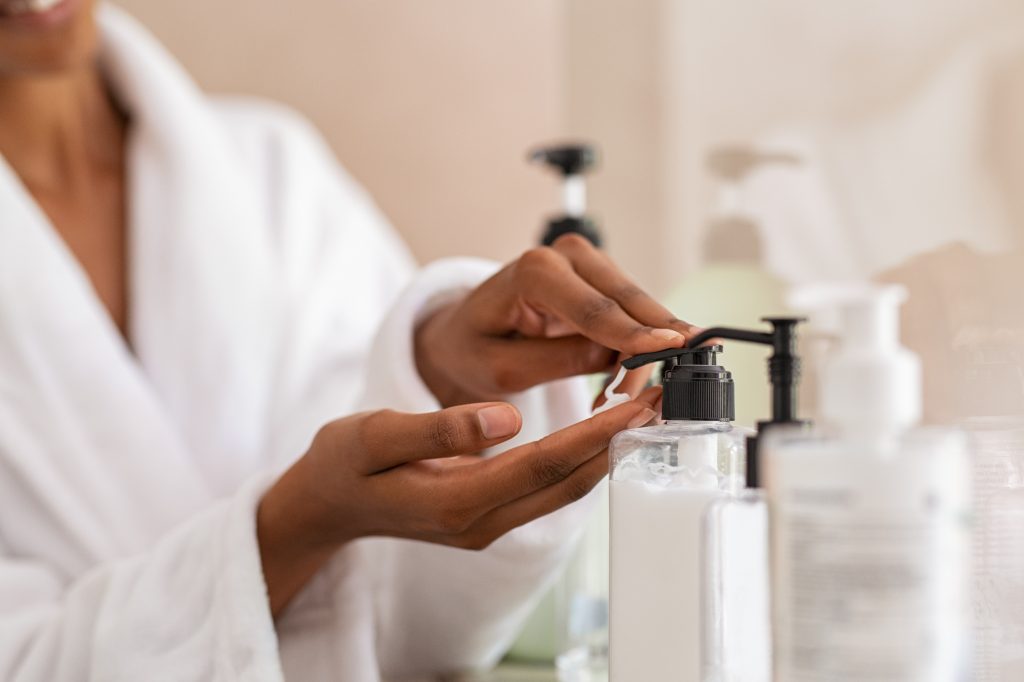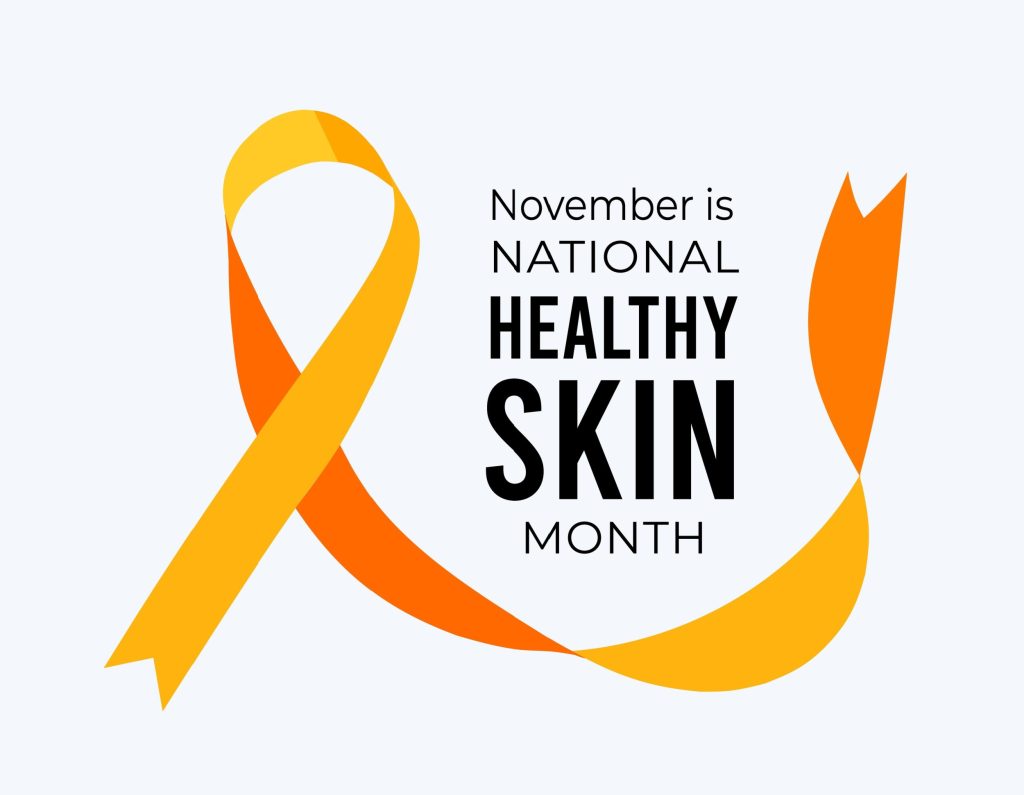
Living in Florida, you’ll likely experience year-round sunshine and warm temperatures (except for those short-lived cold spells and thunderstorms). For many of us, Florida brings enjoyable weather, however, its unique climate can also present specific challenges for our skin as we transition from summer to fall. Unlike many parts of the country where fall brings a sharp drop in temperatures and a dramatic change in humidity, Florida’s fall is more of a subtle shift. But that doesn’t mean our skin care routine should stay the same.
At Florida Dermatology and Skin Cancer Centers (FLDSCC), we understand the complexities of Florida’s weather and how it impacts your skin. In the following blog, we will help you adjust your skin care regimen thoughtfully to maintain healthy skin throughout the seasonal change.
Why Transition Your Skin Care Routine?
As we mentioned above, Florida’s climate allows for milder seasonal changes compared to northern states. While average temperatures do dip in the fall, we still enjoy relatively warm days and plenty of sun exposure. This means that although the air may feel less humid and slightly cooler, the risk of sun damage still remains high throughout the year.
Multiple sources emphasize that UV radiation levels in Florida are among the highest in the United States. Even in fall and winter months, the sun’s rays can penetrate clouds and reflect off water and pavement, increasing your skin’s exposure. This is why transitioning your skin care routine isn’t just about adjusting to cooler weather, it’s about continuing to protect your skin against persistent sun damage while adapting to changes in hydration and skin sensitivity.
Many people believe that once summer ends, they can relax their skin care efforts. In Florida, this couldn’t be further from the truth. The fall season brings environmental changes that affect your skin in several ways:
- Lower Humidity: Fall often brings a decrease in humidity, which can lead to faster moisture loss from the skin’s surface. If your skin feels drier or less supple, it’s a sign that your summer moisturizer might not be enough.
- Changes in Sun Exposure: Although the sun is still strong, the length of daylight shortens. This shift can lead you to believe you don’t have to worry about UV rays, but this is simply not true.
- Environmental Stressors: Fall can bring increased wind and cooler nights, which may exacerbate skin sensitivity and dryness.
- Skin’s Natural Renewal: The skin’s natural cell turnover slows down in cooler months.
Expert Tips to Transition Your Skin Care Routine
1. Use Sun Protection Every Day
Sun safety is non-negotiable in Florida, no matter the season. The Skin Cancer Foundation recommends a broad-spectrum sunscreen with at least SPF 30 daily (SPF 50 when outdoors), even when it’s cloudy. Reapply every two hours if you’re outdoors for extended periods.
Consider sunscreen that’s formulated for your skin type: lightweight for oily or combination skin, and more moisturizing formulations for dry or sensitive skin. Remember, UVA rays that cause premature aging and skin cancer penetrate glass, so even indoor exposure near windows warrants protection on a daily basis.
2. Shift to a More Hydrating Moisturizer
As humidity drops, your skin loses moisture more quickly. This is the perfect time to switch from a light summer lotion to a richer cream or balm that locks in hydration. Look for ingredients like hyaluronic acid, ceramides, and glycerin. These products act as moisture magnets and help repair the skin’s barrier.
For those with oily or acne-prone skin, be sure to use non-comedogenic formulations that hydrate without clogging pores.
3. Incorporate Gentle Exfoliation
With the slowing of skin cell turnover in the fall, dead skin cells more easily accumulate on the surface of the skin, leading to dullness and uneven tone. Adding a gentle exfoliant once or twice a week helps new skin appear and enhances the effectiveness of your moisturizers and serums.
Chemical exfoliants like alpha-hydroxy acids (AHAs) such as glycolic or lactic acid are often preferred over physical scrubs, which can be abrasive. Always patch test and consult your dermatologist to avoid irritation.
4. Introduce Antioxidants and Repairing Serums
Fall is a great time to incorporate antioxidant serums containing vitamins C and E, squalene, and niacinamide. These ingredients help combat free radical damage from sun exposure and pollution, supporting skin repair and brightening.
5. Adapt Your Cleansing Routine
During the summer, you might favor gel cleansers to manage sweat and oil. In the fall, consider hydrating or cream-based cleansers that effectively remove impurities without stripping your skin’s natural oils.
6. Don’t Neglect Your Lips and Eye Area
The delicate skin around your eyes and lips is prone to dryness and fine lines, especially as the air becomes drier. Use nourishing eye creams and hydrating lip balms regularly to keep these areas soft and protected.
Special Considerations for Florida Residents
- Stay Vigilant About Skin Checks: The Florida Academy of Dermatology states that Florida has one of the highest rates of skin cancer in the country. Regular self-exams and annual visits to a board-certified dermatologist are essential even during the fall.
- Hydrate from the Inside Out: Drinking plenty of water helps maintain skin hydration, especially when transitioning to cooler, less humid weather.
- Be Mindful of Allergies: Fall can bring seasonal allergies that may affect your skin by causing irritation or redness. Always check labels and use gentle, hypoallergenic skin care products for sensitive skin.
Three Common Myths About Florida Fall Skin Care
1. Myth: You don’t need sunscreen in the fall.
Fact: UV rays are strong year-round in Florida. Daily sunscreen application of at least SPF 30 is crucial regardless of the season.
2. Myth: Your skin won’t dry out in Florida fall.
Fact: Lower humidity and occasional wind can dry out even the most resilient skin. Adjust your moisturizer accordingly.
3. Myth: Exfoliation is only for summer.
Fact: Gentle exfoliation during the fall helps combat dullness and supports healthy skin renewal.
Fall Forward Into These Next Steps
Transitioning your skin care routine from summer to fall in Florida requires a comprehensive approach that balances hydration, protection, and repair. Our unique climate means that while the seasonal changes may be subtle, your skin needs specialized care that acknowledges the differences.
At FLDSCC we recommend staying consistent with sun protection, boosting hydration, and incorporating antioxidant-rich products to maintain your skin’s health during the transition from summer to fall.
For personalized advice and professional treatments tailored to Florida’s climate, schedule a consultation with one of our dermatological experts today! Call us at (855) FLD-SKIN or visit us online at https://fldscc.com/.
About Us
FLDSCC’s team of providers are experts in diagnosing and treating skin cancers; skin conditions and diseases such as eczema, rosacea, dry skin, rashes, and warts; and chronic skin diseases and infections, while simultaneously tackling aging skin, wound care, and a multitude of other skin, hair, and nail concerns.
Several FLDSCC providers are fellowship-trained in Mohs micrographic surgery, an effective state-of-the-art treatment for most types of skin cancers. Mohs surgery involves minimal discomfort and encourages the greatest preservation of healthy tissue, which means less risk of scarring and superior cosmetic results.
FLDSCC has many convenient locations throughout the state. For more information, visit www.fldscc.com, or call (855) FLD-SKIN.


